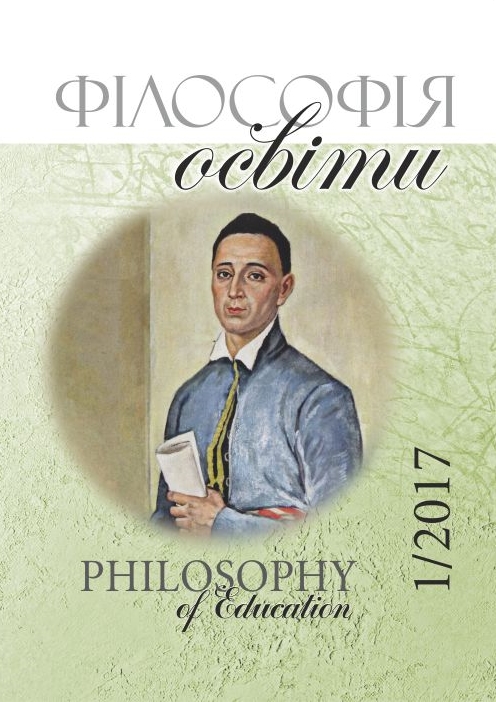Art within Philosophy of Education. P.1.
DOI:
https://doi.org/10.31874/2309-1606-2017-20-1-280-295Keywords:
philosophy of education, a human being, art, culture creation, spiritual and practical development of the world, ideological pluralism, totality of simulacraAbstract
Man, culture and art are a unique integrity. Philosophy generalizes the world-view bases of a definite historical form of culture and determines to a great extent the character of the process of cognition, including the artistic one (the harmonization of sensual and rational spheres of consciousness, the optimization of various types of information - verbal, sensory, structural ones, the development of productive thinking, etc.). Culture is equal to creative activity. So, creativity is a cultural activity with characteristic innovative approaches to solving social, professional and personal problems. The article defines art as a special form of culture and the concept of philosophy of education. Ideological and philosophical, multicultural, and trans-disciplinary approaches to the analysis of art and the dynamics of culture creation become methodologically important. Philosophy, science and art are complementary. The philosophical, scientific, artistic knowledge, the spiritual and practical development of the world reveal new cultural senses of the sign-symbol. Philosophy of education, focused on the value of a human being and creativity, involves the development of culture and art, contributing to personal creative development. Unfortunately, modern youth have a very limited knowledge of classical, especially sacred art. It is personality orientation that reveals the dialogue of art, artistic traditions, the functioning of philosophy of education as an open system capable of multicultural communication.
References
Antonovich, D. (1993). Ukrainian art. In: Ukrainian culture: Lectures edited by Dmitry Antonovich. K .: Lybid, 237-240 [in Ukrainian]
Boethius (1990). "Consolation by Philosophy" and other treatises. M.: Nauka [in Russian]
Gabrichevsky, A.G. (2002). Morphology of art. M .: Agraf [in Russian]
Hegel, G.W.F. (1974). Encyclopedia of Philosophical Sciences. The science of logic. V. 2. M.: Mysl' [in Russian]
Hegel G.W.F. (1977). Encyclopedia of Philosophical Sciences. Philosophy of the spirit. V. 3. M.:
Mysl' [in Russian]
Hegel G.W.F. (1990). Philosophy of law. Ed. D.A. Kerimov, V.S. Nersesyants. M.: Mysl' [in Russian]
Krymsʹkyy, S.B. (2008). Under the signature of Sofia. K. [in Ukrainian]
Nietzsche, F. (2005). The will to power. Experience of revaluation of all values. Translation from German by E. Gertsyk and others. Moscow: Cultural Revolution [in Russian]
Florensky, P.A. (2000). Articles and research on the history and philosophy of art and
archeology. M.: Mysl' [in Russian]
Heidegger M. (1998). Introduction to metaphysics. Translation from German by N. O. Guchinskaya. S.-Pb. [in Russian]
Heidegger M. (1993). Time and Being. Articles and speeches. Translation from German, introductory article and commentary by V.V. Bibikhin. M.: Republic [in Russian]
Transdisciplinarity Charter. Translation from English by V. I. Moiseev [Electronic resource] [in Russian]
URL: http: //transstudy.ru/xartiya-transdischiplinar.nosti-2.html
Eco U. (2004). Evolution of medieval estetics. Translation from ital. by Yu. Ilyin. S.-Pb.: Azbuka-klassika [in Russian]
Downloads
-
PDF (Українська)
Downloads: 1024
Published
How to Cite
Issue
Section
License
- Authors who publish with this journal agree to the following terms:
- Authors retain copyright and grant the journal right of first publication;
- Authors are able to enter into separate, additional contractual arrangements for the non-exclusive distribution of the journal's published version of the work (e.g., post it to an institutional repository or publish it in a book), with an acknowledgement of its initial publication in this journal.





